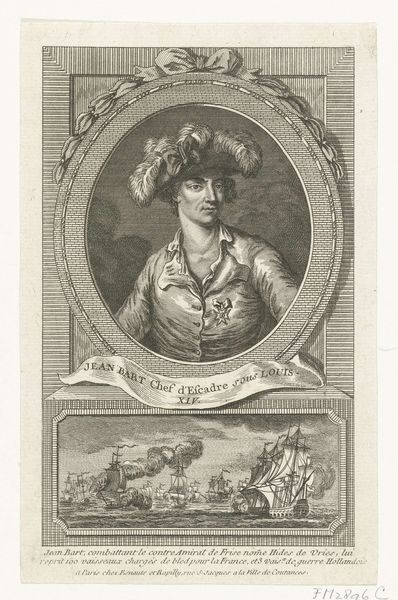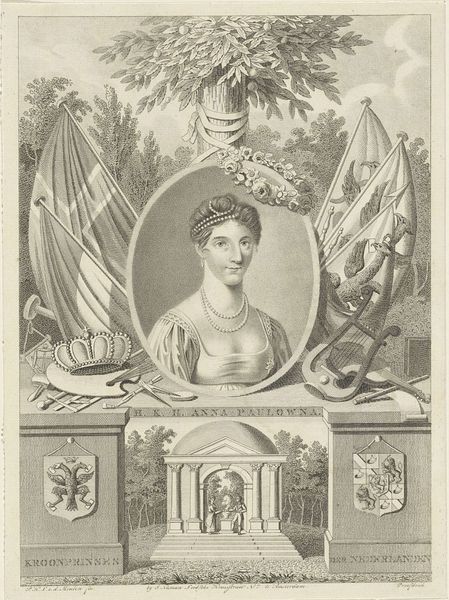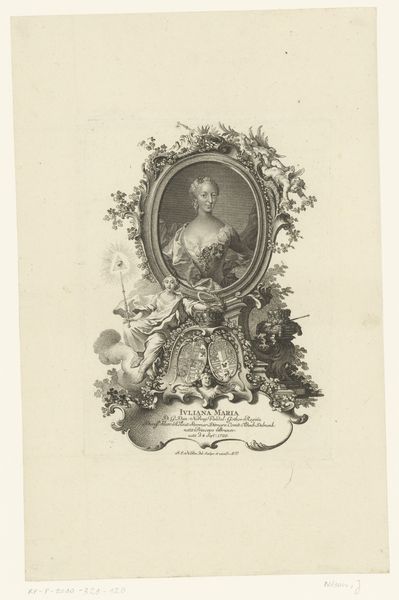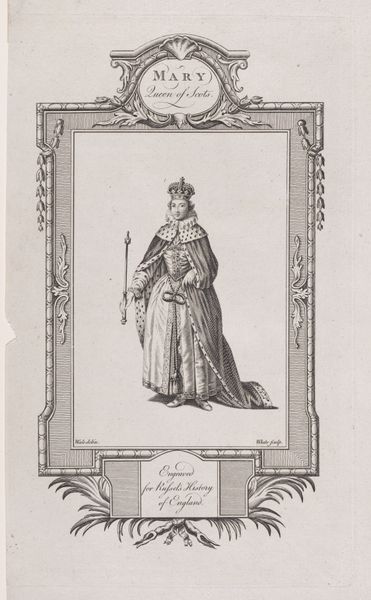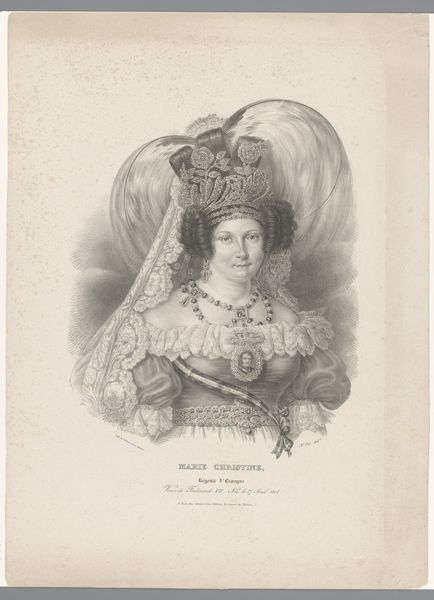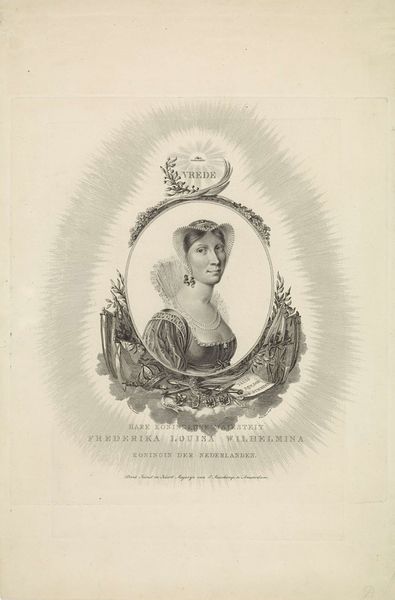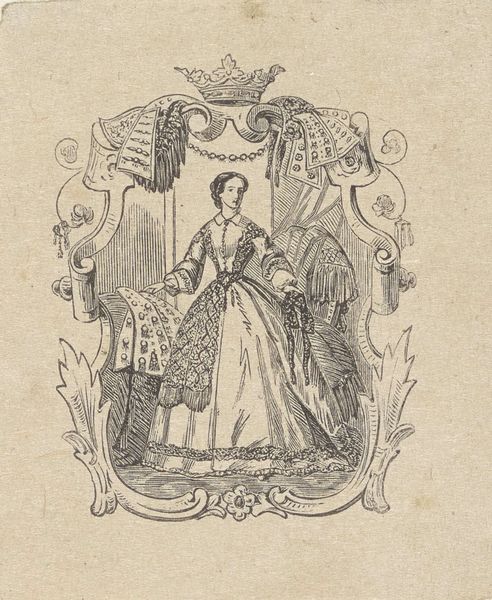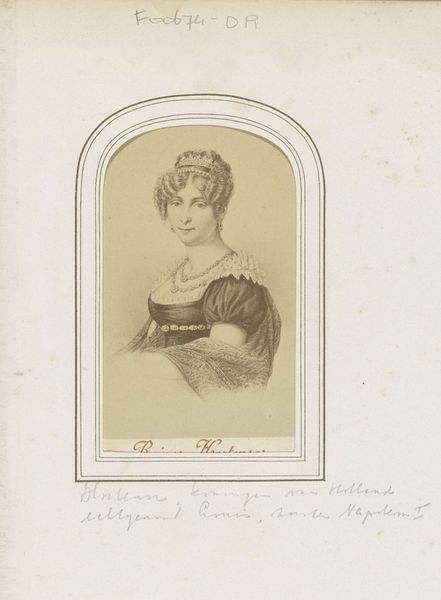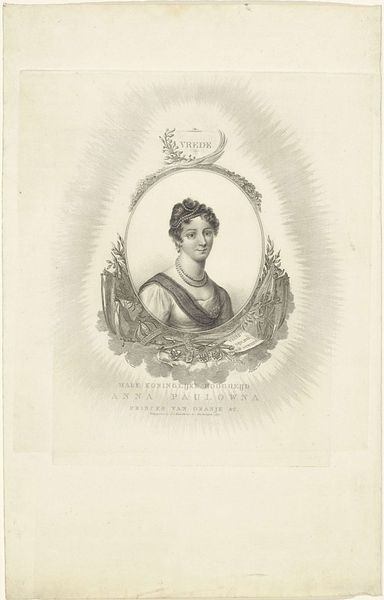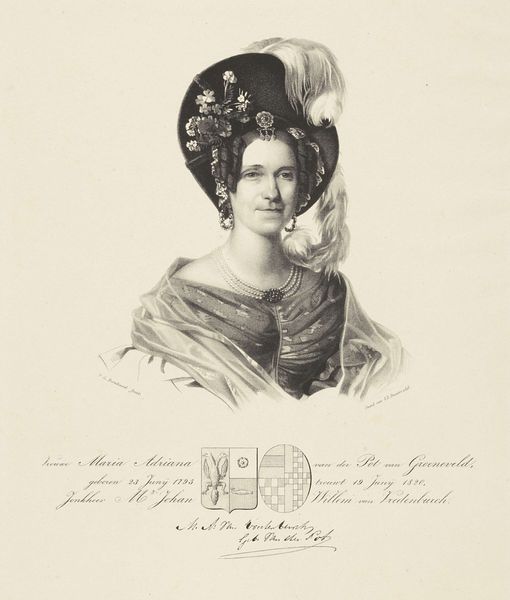
print, engraving
#
portrait
#
neoclacissism
# print
#
old engraving style
#
pencil drawing
#
line
#
history-painting
#
engraving
Dimensions: height 383 mm, width 279 mm
Copyright: Rijks Museum: Open Domain
Curator: This is a print of "Portret van Wilhelmina van Pruisen," dating to 1814-1815 by Pieter van der Meulen, housed right here at the Rijksmuseum. Editor: It has a formal, almost stoic feel to it. The framing of the portrait, with its crown and heraldry, gives a clear sense of power, even with the limited color palette typical of an engraving. Curator: Yes, the symbolic language is deliberate. Consider the Neoclassical influence: the rigid composition, the emblems of authority meticulously rendered, the oval cartouche itself echoing ancient Roman portraiture. It evokes stability and legacy. Editor: Legacy, certainly. The inclusion of the procession scene at the bottom speaks directly to the restoration of the monarchy. It's a careful visual construction that reinforces the renewed power structure after a period of upheaval. Do you read her face as self-aware in that regard? Curator: I do. The symbols surrounding her contribute to that reading; however, observe the way the eyes engage the viewer—direct, confident, with a hint of something perhaps less legible? This could indicate an emotional depth beyond merely dynastic representation. What symbols might give us that information? Editor: That’s true. It is possible the somewhat severe presentation can speak to the societal constrictions placed upon royal women. Here she is, a representation, framed with masculine power emblems that still constrain her identity as her own agent. Curator: Intriguing observation. Those masculine elements, paradoxically, secure her position but also underscore a narrative of power being mediated through very specific gender roles, in a particular point in time. It certainly is not uncommon within portraiture, but that specific social situation helps inform its historical place. Editor: It makes you consider who this engraving was actually *for*. What's its aim within that social fabric you speak of? Was this really intended to uplift her own authority or further entrench other people in the social imaginary? Curator: That interplay, I think, is what makes this particular print compelling, and keeps these crucial questions circulating within and beyond this piece. Editor: Absolutely. The contradictions are rich and are very visually appealing. Thank you for bringing attention to this historical moment!
Comments
No comments
Be the first to comment and join the conversation on the ultimate creative platform.
